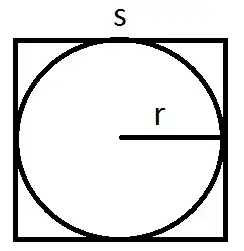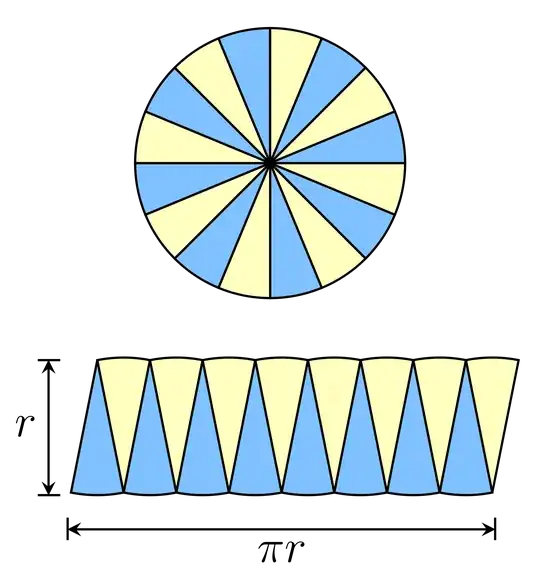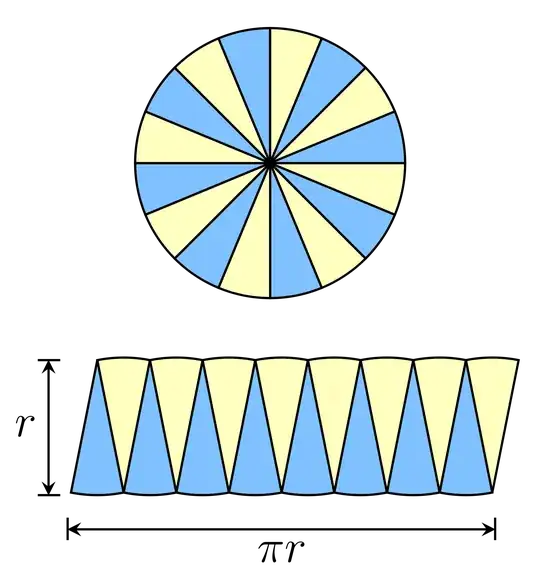Here's a fun way to think of it. You know that the radius $r$ of a circle extends from the center of the circle to the edge of the circle. This gives an area of $A=\pi r^2$.
You also know that the area of a square is $A=s^2$ where $s$ is the length of the square's side. But what if we use a measurement of the square analogous to the radius of a circle? (Again, this is just for fun thinking...)
For the square, we'll let this new measurement extend from the square's center to the middle of one side. This is analogous to the radius of a circle (meaning it's comparable in certain respects, if we're mentally flexible). We could even call it $r$ if we want.
Since the length of a side $s$ of a square is equal to $2r$, we can say $s=2r$. This gives the square's area as $A=s^2=(2r)^2=4r^2$.
So, using our mental flexibility and analogous measurements of each object, we get the square's area as $A=4r^2$ and the circle's area as $A=\pi r^2$.

Now imagine we have a square and a circle, each with the same $r$. Let's let $r=1$. This gives the square's area as $A=4$ and the circle's area as $A=\pi =3.14159265358979323...$
This shows that, for the analogous $r$ measurement, the square's area is a little bigger than the corresponding circle. This makes sense if you look at the two figures. The square has 4 pointy corners that add this extra area.
Using our fun flexible measurements, we've supported what you believe: $r^2$ is a two dimensional measurement of area. For the circle (due to it's special shape) we multiply that two-dimensional measurement by the "conversion factor" of $\pi$ to get the final area. This conversion factor of $\pi$ is slightly less than what we'd have to multiply a square by ($4$) if we used a measurement of the square analogous to the radius of a circle.
Again, this was all for fun. People don't use $r$ to measure squares, but it would be cool if they did. There's so much more fun when you look into the wonders of this circular "conversion factor" $\pi$ and its amazing properties that extend well beyond circles. That's for another time though...


